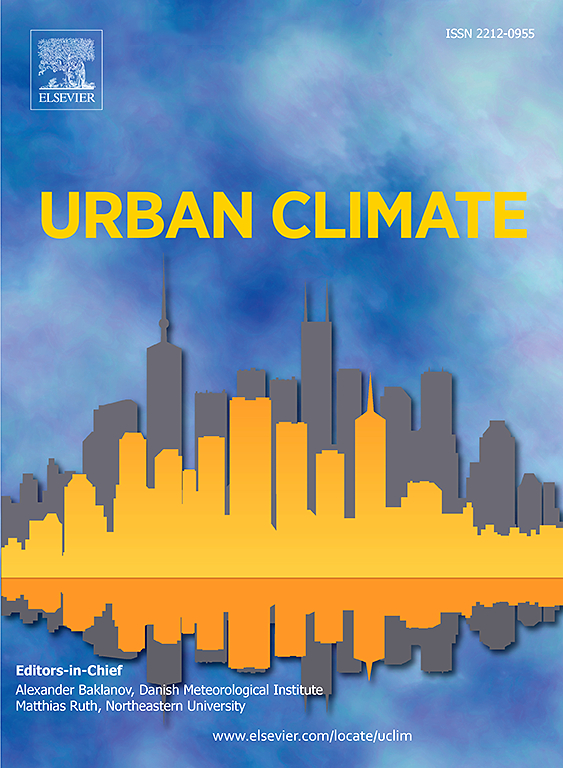Dynamical and chemical impacts of urban green areas on air pollution in a city environment
IF 6
2区 工程技术
Q1 ENVIRONMENTAL SCIENCES
引用次数: 0
Abstract
Green Nature-Based Solutions (NBS) can be utilized to mitigate air pollution in cities; however, other factors associated with urban morphology and local meteorological conditions contribute to pollution concentrations. Urban dispersion models are frequently used for analysing these aspects, but they may not account for vegetation effects on pollutant dynamical and chemical processes. The present study implements a methodology to evaluate the impact of vegetation on city pollution levels. The aerodynamic effect of vegetation is introduced by modifying the surface roughness using the morphometric method. Tree emissions are modelled as point sources, considering tree characteristics and environmental conditions. The ADMS-Urban model is utilized to reproduce the variability of pollutant concentrations during summer 2023 in a selected neighbourhood of Bologna, Italy, characterized by densely vegetated areas. Results are verified by comparing the results of numerical simulations with pollutant observations measured within an ad-hoc measuring campaign, part of the I-CHANGE H2020 project. Pollutant emissions from green areas locally increase concentrations up to 7.4 % during the day, generating a persistent accumulation in surrounding areas. Thus, tree emission has a significant impact on pollutant concentrations, comparable to building elements in urban morphology. This highlights the need to include vegetation emissions to accurately assess urban air quality and to minimise possible side effects of green NBS.
城市绿地对城市大气污染的动态化学影响
绿色自然解决方案(NBS)可用于缓解城市空气污染;然而,与城市形态和当地气象条件有关的其他因素对污染浓度也有影响。城市扩散模型经常用于分析这些方面,但它们可能无法解释植被对污染物动力和化学过程的影响。本研究采用一种方法来评价植被对城市污染水平的影响。利用形态测量法对植被表面粗糙度进行修正,从而引入植被的气动效应。考虑到树木的特性和环境条件,树木排放被建模为点源。利用ads - urban模型再现了意大利博洛尼亚选定的植被密集地区2023年夏季污染物浓度的变化。通过将数值模拟结果与I-CHANGE H2020项目的一部分临时测量活动中测量的污染物观测结果进行比较,验证了结果。在白天,来自绿色区域的污染物排放会使局部地区的臭氧浓度增加7.4%,从而在周边地区持续积累。因此,树木排放对污染物浓度的影响与城市形态中的建筑元素相当。这凸显了将植被排放纳入城市空气质量的必要性,以准确评估城市空气质量,并尽量减少绿色国家统计局可能产生的副作用。
本文章由计算机程序翻译,如有差异,请以英文原文为准。
求助全文
约1分钟内获得全文
求助全文
来源期刊

Urban Climate
Social Sciences-Urban Studies
CiteScore
9.70
自引率
9.40%
发文量
286
期刊介绍:
Urban Climate serves the scientific and decision making communities with the publication of research on theory, science and applications relevant to understanding urban climatic conditions and change in relation to their geography and to demographic, socioeconomic, institutional, technological and environmental dynamics and global change. Targeted towards both disciplinary and interdisciplinary audiences, this journal publishes original research papers, comprehensive review articles, book reviews, and short communications on topics including, but not limited to, the following:
Urban meteorology and climate[...]
Urban environmental pollution[...]
Adaptation to global change[...]
Urban economic and social issues[...]
Research Approaches[...]
 求助内容:
求助内容: 应助结果提醒方式:
应助结果提醒方式:


